One year ago, state media largely ignored the biggest outbreak of civil unrest in Kazakhstan’s history. The job of informing the public objectively about the widespread protests fell on independent reporters and a few so-called citizen journalists and bloggers who did their jobs at great personal risk. These journalists were attacked by protesters, assailed and tear-gassed by police, shot with rubber bullets, detained, and in some cases arrested, beaten, and imprisoned.
When the air, so recently filled with smoke from grenades and bullets, both rubber and real, cleared, reporters were the ones pressing the government for a full accounting of the 238 people killed, more than 4,500 injured, around 10,000 detained, and several hundred reportedly tortured.
This is the story of the Qandy Qantar — “Bloody January” — uprising through the eyes of those who covered it, beginning in Zhanaozen and ending in Almaty.
You can read this series in English at The Diplomat and in Russian and Kazakh at Orda.kz.
ZHANAOZEN, Kazakhstan: Azattyq reporter Saniya Toiken was celebrating New Year’s Eve with her family at her village home outside the capital city of Astana when she began receiving texts from people in Zhanaozen about a planned protest over rising gas prices.
“It was the holidays,” Saniya remembered. “I knew something was going to happen. There had been unhappiness there for quite a while.”
Saniya began monitoring social media and saw videos of disgruntled people milling outside the mayor’s office on New Year’s Day, complaining that gas prices had gone from 60 tenge to 120 tenge a liter. Instead of filling up their cars for the equivalent of $5.85, residents were now paying $11.25.
By January 2, Saniya’s phone and social media feeds were flooded with images of a large crowd gathered at the city’s main roundabout. Typical protests in Zhanaozen involve a dozen or so regular activists who are quickly picked up by police. But this time, it was normal citizens, those directly hit by the rising gas prices — taxi and truck drivers, people who owned cars — who were flooding the streets and blocking traffic. And the police just watched.
“I wrote to my editor and said that we need to go because this protest would be long and strong,” Saniya said.
Since 2008, Saniya has covered oil and gas worker strikes in the Mangystau region which includes the oil town of Zhanaozen. She also covered the 2011 Zhanaozen Massacre when, according to official government reports, at least 15 people were killed after police started shooting during an oil worker strike. Now based in Astana, Saniya still maintains her contacts in western Kazakhstan.
One of those sources is Alma Bekes, an activist and citizen journalist, who sent updates to Saniya and livestreamed to Facebook.
“I was so excited and happy that the ‘sleeping people’ showed up,” Alma said, wearing signature oversized glasses that emphasize her large, inquisitive eyes. “‘Sleeping people’ are those who never come to the protests and who don’t seem to be aware of what is happening our country.”
Calling herself “Zhanaozen Online,” Alma regularly posts news about her hometown on social media. Because state-funded media generally doesn’t cover illegal protests — and there are few independent media outlets — citizen journalists like Alma filled a critical gap informing the country about what was happening during the early January 2022 protests.
Nurbek Nurgaliyev, a longtime activist, also was stunned that the “meeting” — the English word Kazakhstanis use for protest — was planned by “regular guys,” many of which had never participated in a protest before. Nurbek speaks with an unnaturally deep voice, the result of getting shot in the neck during the 2011 massacre. His protesting about gas prices has landed him in prison three times. He once told the regional mayor in Aktau that gas prices shouldn’t be higher than 50 tenge per liter “because we are literally sitting on it,” he said, referring to the oil and gas that has enriched the Kazakh state but not necessarily the regions where it comes from.
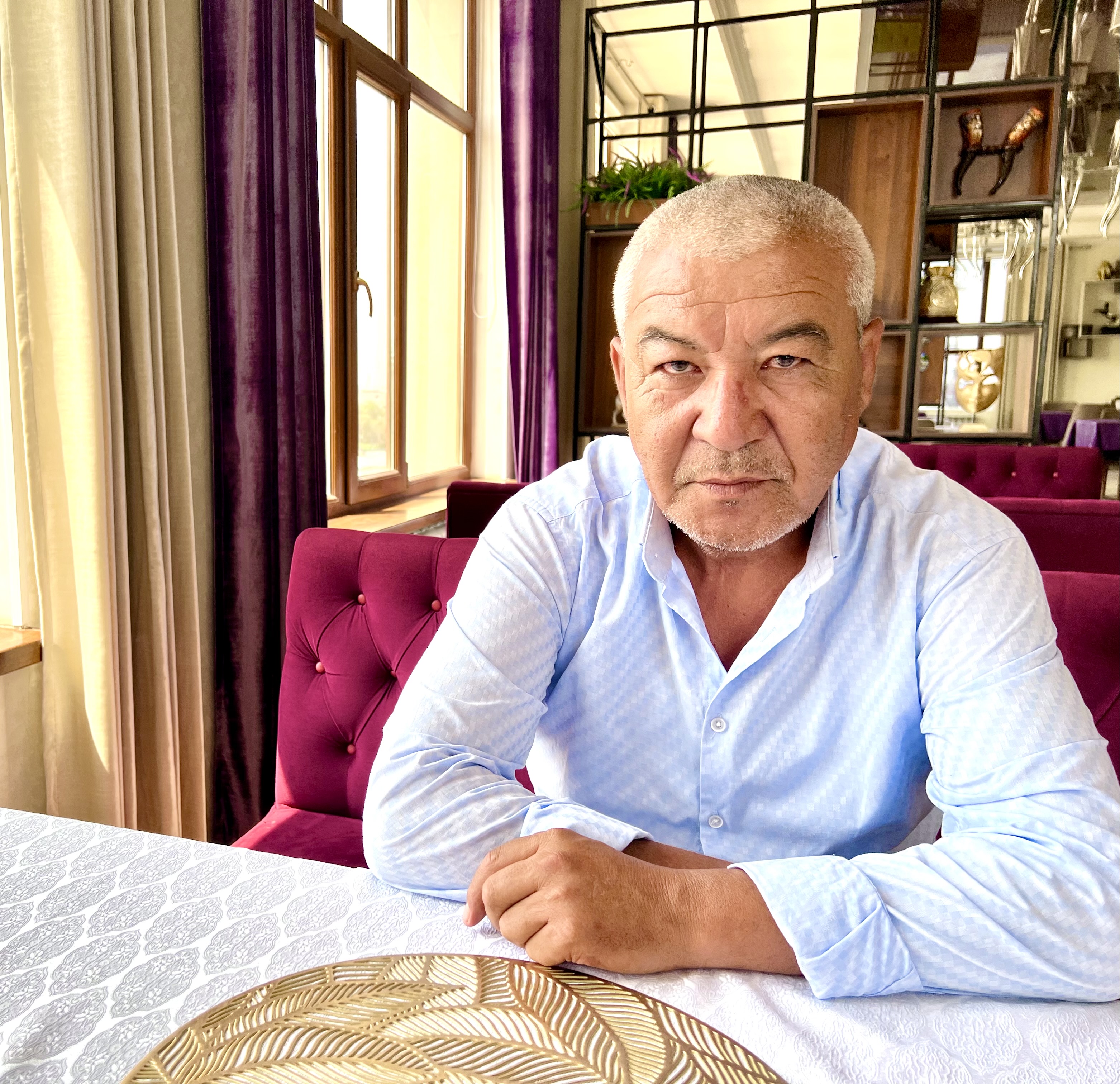
Activist Nurbek Nurgaliyev was stunned that the protests were planned by people who had never participated in protests before. Photo credit: Cheryl L. Reed
Zhanaozen is a dusty, desert town of about 80,000 in western Kazakhstan’s Mangystau region. It is known for its rich oil fields and the deadly 2011 strike and massacre, which, according to activists, resulted in 100 deaths and the police torture of 37 more, far surpassing official state accounts. The legacy of the 2011 massacre is often cited as the reason protests spread so quickly in early 2022. People wanted to show support for Zhanaozen because they felt an almost collective guilt for not having done so in the past.
The first city to follow was Aktau, about 90 miles from Zhanaozen and home of the regional mayor.
On January 2, videographer Issa Tazhenbayev was having a late dinner when he learned that people were gathering at Yntymak Square across from the mayor’s office in Aktau. He immediately drove to the center of town where he saw a crowd of several hundred.
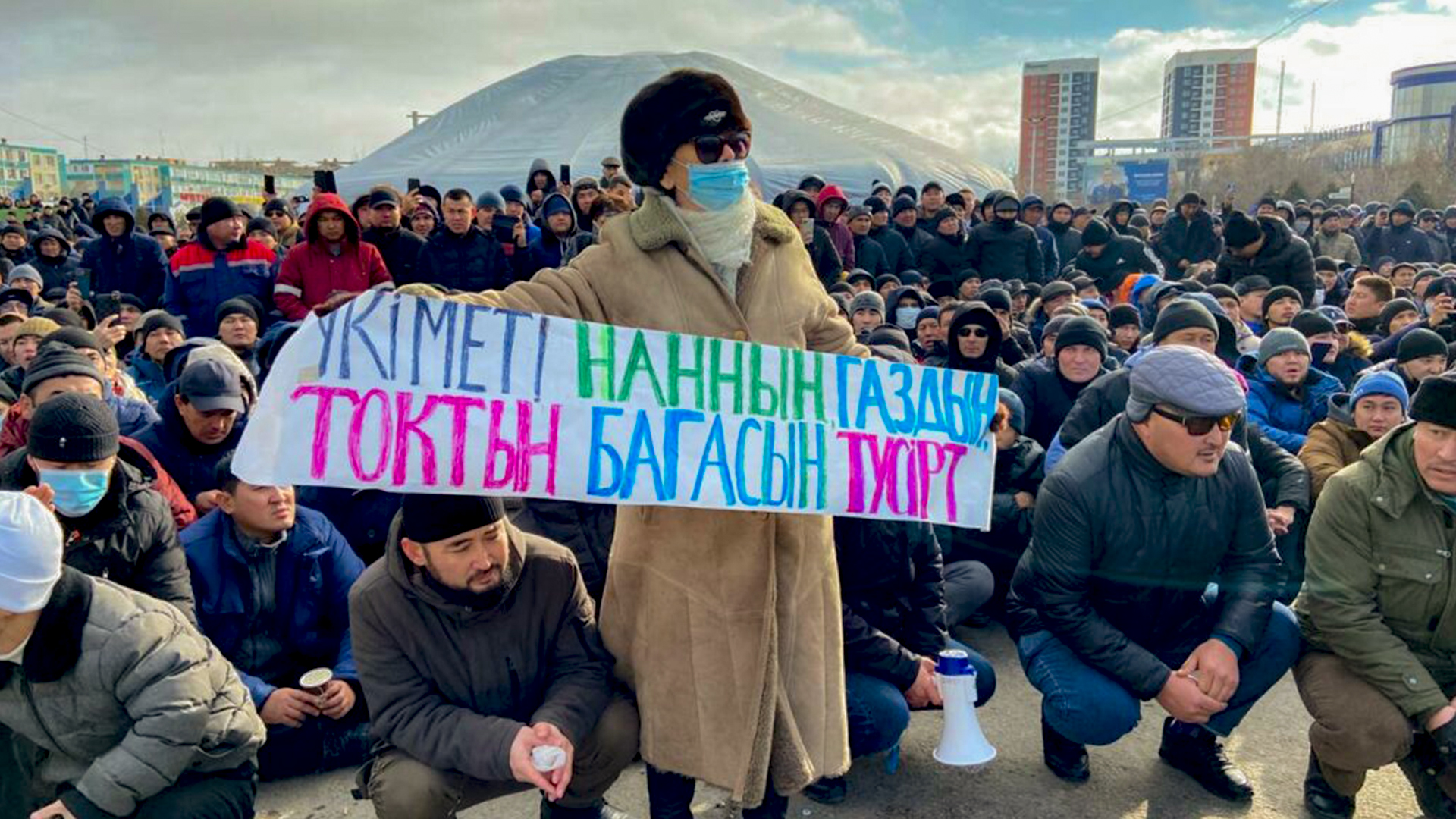
A protester in Aktau holds a sign calling on the government to lower bread and gas prices. Photo credit: Adelaida Auespekova
“I understood that this was something extraordinary. And I knew people in Aktau were going to support Zhanaozen because we didn’t support them in 2011,” said Issa.
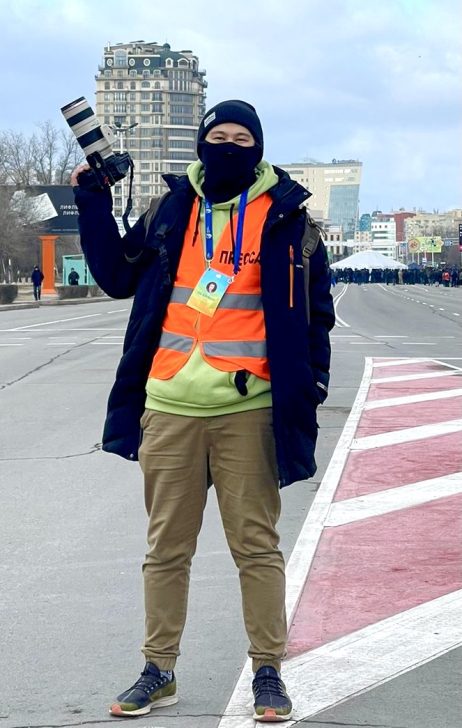
Issa, a videographer, mostly shoots videos of Mangystau’s canyons. But in January 2022 the protests compelled him to head to streets. Photo courtesy of Issa Tazhenvayev.
The next morning, Issa received a WhatsApp message that thousands of protesters had blocked the street in front of the mayor’s office.
He grabbed his camera and headed out. “I was scared because our country is against public protests. I knew I could be arrested.”
Issa, a videographer for Expedition +362 in Aktau, mostly shoots videos of Mangystau’s canyons. But the protests compelled Issa, then 30, to borrow a press jacket and wear it under his coat just in case the police stopped him.
“I didn’t see any journalists there,” he said. “But everyone had their phones out and were filming. No one [else] had a professional camera.”
Issa’s photos were among the first the world saw of the Aktau protest. He sold videos and photos to the Russian news agency, Tass, The Guardian, and several European media outlets.
His photos show police wearing black helmets, black balaclavas and carrying black riot shields. Issa thought they looked like black-clad stormtroopers from “Star Wars.”
Issa documented police guarding the mayor’s office and standing on top of buildings overlooking the main square. His images show curious residents peering over balconies at demonstrators. Other photos show how organized the protest was: a command center in a yurt that spanned three lanes of traffic, tents where people provided tea, bread, water and dumplings, and a line of porta-potties.
In his videos, protesters hold signs that read “Old man out” as they chant and thrust their fists in the air — a reference to former President Nursultan Nazarbayev, who at 82 still had a grip on the government despite resigning from the presidency in March 2019.
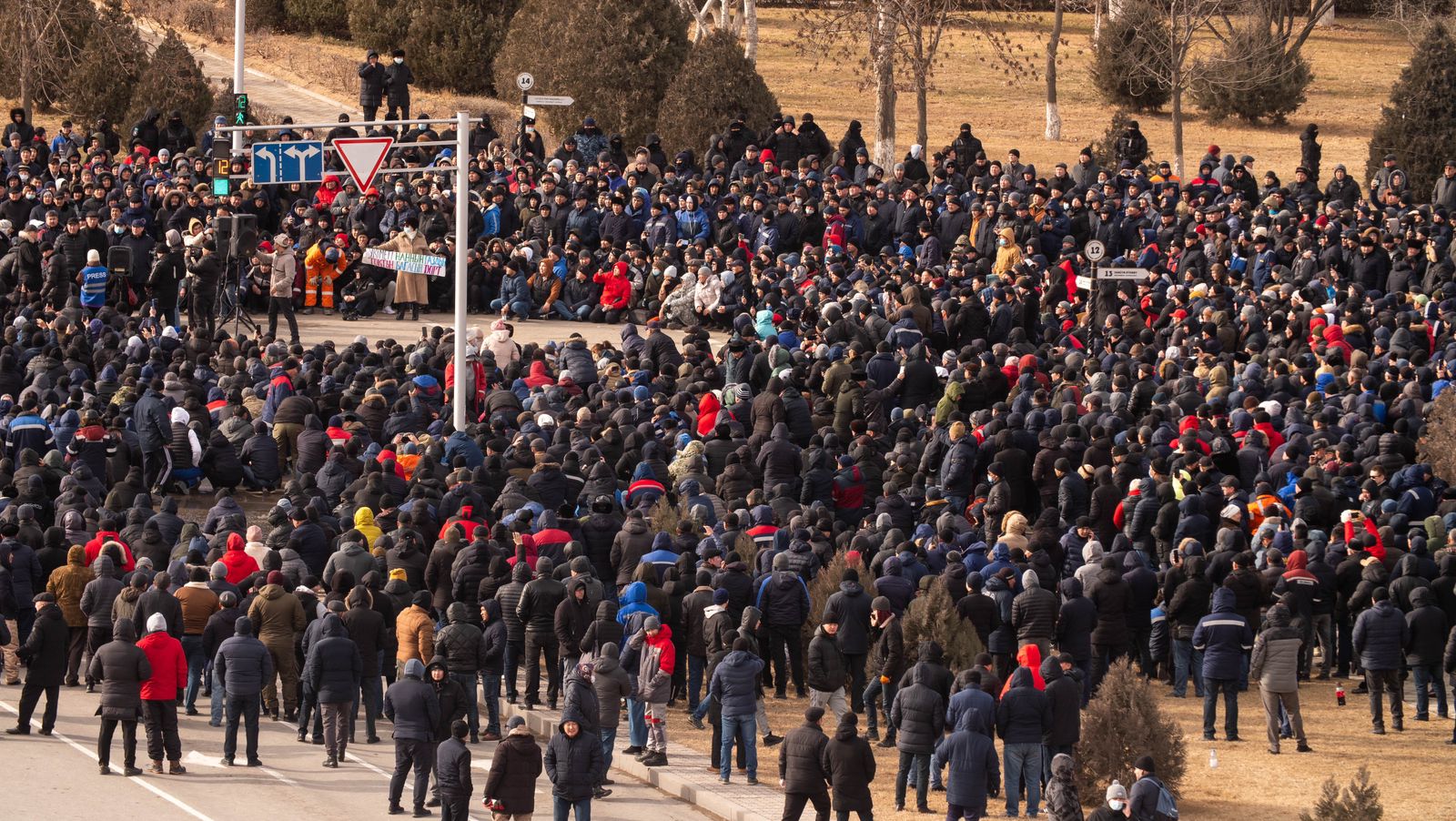
Protesters gather in Aktau. Photo credit: Issa Tazhenbayev.
“I felt like I was in the stadium, and everyone was shouting for the same team,” Issa said.
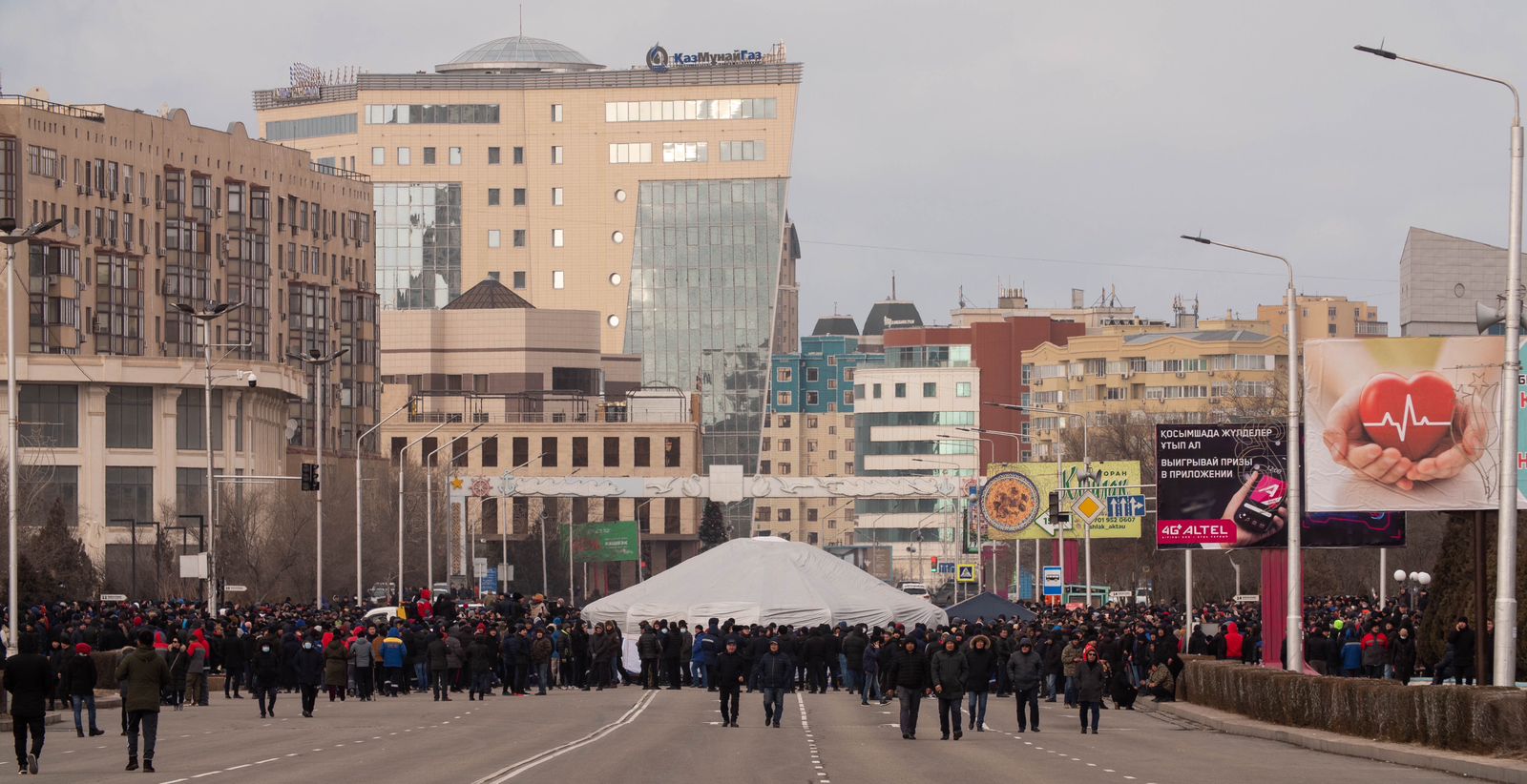
Protesters erected a yurt in Aktau, spanning three lanes of traffic. Photo credit: Issa Tazhenbayev.
Meanwhile, Saniya told her son, his wife, and her sister who were visiting for the holidays that she had to return to Astana to cover a story. By noon on January 3, Saniya had reached Zhanaozen, where she saw thousands of people gathered around a makeshift stage near the town’s statue of a snow leopard. Behind the crowd on a building was a three-foot high mural of the famous Kazakhstan poet Abai Qunanbaiuly with one of his quotes: “Keep your intelligence, courage and heart together. Then you’ll be different than the crowd.”
The crowd that day were braced for the cold, wintry wind. People huddled together in heavy coats and thick hats as they listened to speeches.
“Zhanaozen people are very special and unusual,” explained Saniya. “They have hot tempers and are able to say no. They are able to stop things they don’t like. It’s very easy for people to go for a protest in Zhanaozen. When others learn they gather to show solidarity. The government is feeling guilty for what it did to the people of Zhanaozen in 2011. And the people in Zhanaozen are aware of that.”
Saniya knows Zhanaozen well. She began reporting on oil and gas worker strikes in 2008. Her coverage drew attention from police and the government’s security services, KNB, who frequently detained, questioned and followed her, she said.
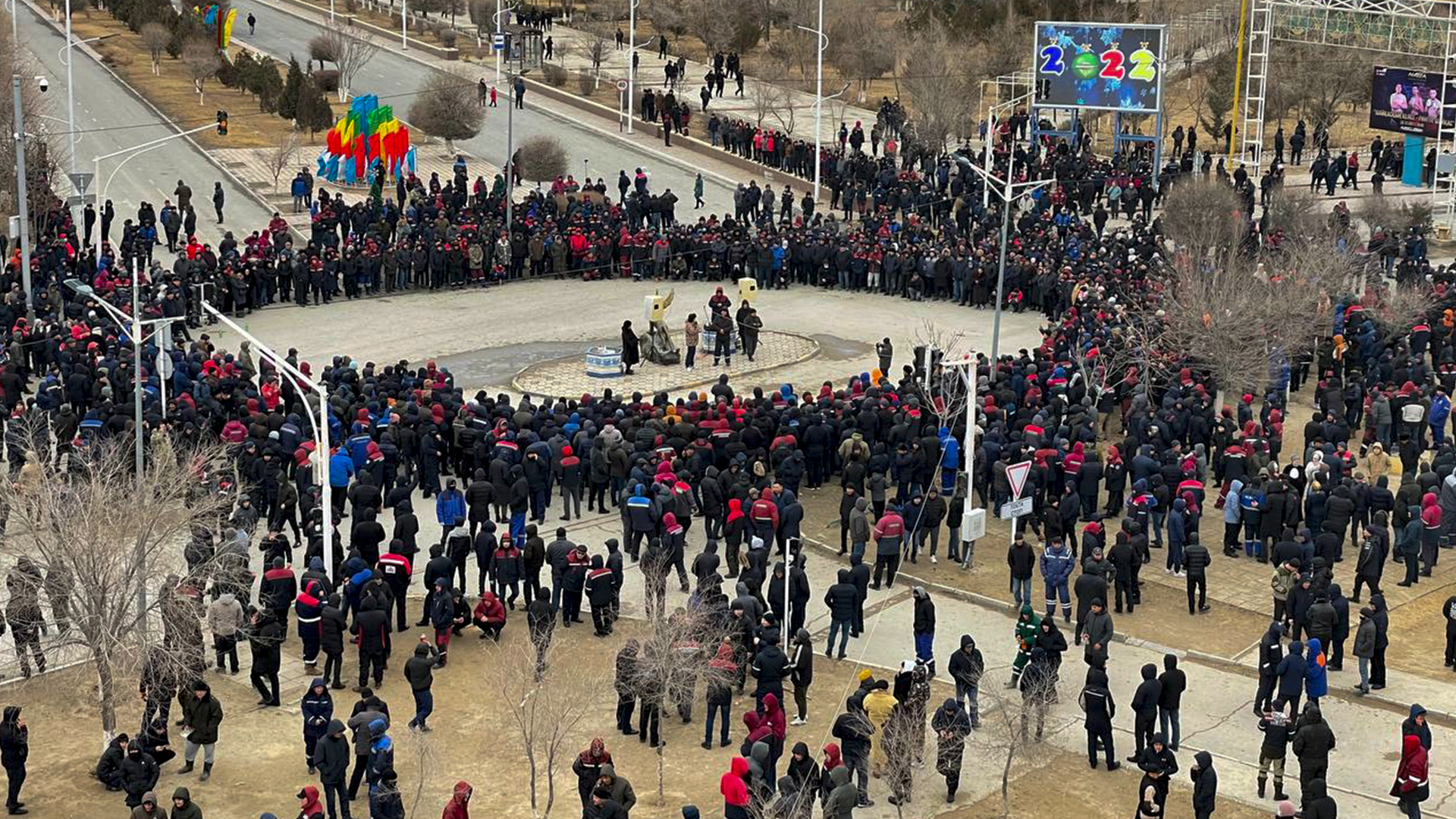
Protesters gather in Zhanaozen, Kazakhstan in early January 2022. Photo credit: Kultegin Aspanuly.
In Almaty, Kazakhstan’s old capital and largest city, Orda.kz editors were asking reporter Assan Anarbay, then 26, to fly three hours to cover the rallies in western Kazakhstan.
Assan, who goes by Kultegin Aspanuly online, told his family he was going to Turkey. When he arrived at the Aktau airport on the evening of January 3, he discovered the road to the city was blocked. But when protesters learned he was a journalist, they escorted him to the central stadium.
“Police were everywhere, but they didn’t stop the protests,” Assan said. He stayed in Aktau until 4 a.m. then headed to Zhanaozen.
“I wanted to be in the epicenter of the protest,” he said.
Assan was impressed by the thousands he saw amassed where three streets converged. He was amazed at how organized the protest was, how people carried in food and drinks, how they’d erected half a dozen yurts and had drawn up schedules for who should stay at the site during the night.
He filmed protesters as they sang patriotic songs and took turns at the microphone discussing problems like high unemployment and lack of clean drinking water. Every night young men would show up and urge the crowd to commit violence — a common report at other city protests. City elders urged the crowd to remain peaceful.
When the regional and city mayors and the director of the Kazakh gas processing plant showed up offering to lower gas prices to 90 tenge, protesters chanted “Shame!”
On January 5, the major oil companies suspended work and the crowds swelled.
By that evening, the crowds in Aktau had grown to an estimated 20,000, and Saniya knew she had to get there. When she arrived, she noticed 15 young men in black suits and beards standing as a barrier between leaders of the protest and the people. They were calling for attacks on the government.
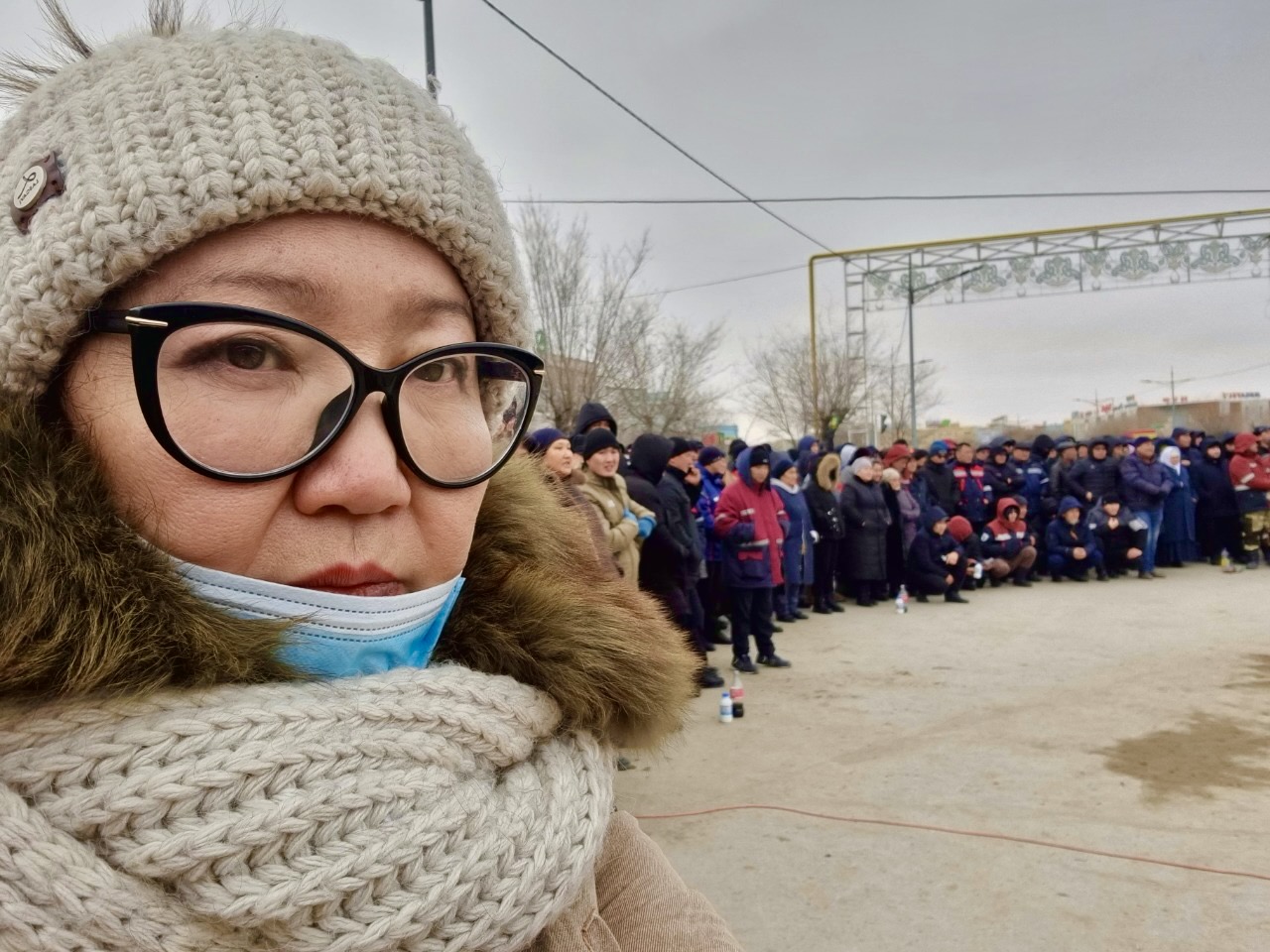
Since 2008, Saniya has covered oil and gas worker strikes in the Mangystau region which includes the oil town of Zhanaozen. Photo courtesy of Saniya Toiken.
Saniya said she confronted the men and accused them of trying to provoke the crowd like provocateurs did during the infamous 2011 oil strike. The men ordered her to stop photographing. One man threatened to break her phone and lunged at her. She said she escaped by jumping on top of a car near where the protest leaders were making speeches.
Back in Zhanaozen, some influential locals urged protesters to continue until all their demands — including the resignation of the local and regional mayors — were met. Protests in many cities ended on January 6. Nurbek and three other activists met with the mayor, the region’s deputy prosecutor and an oil company representative trying to end the protest. The activists, he said, insisted that no one face prosecution for participating. The deputy prosecutor agreed.
On January 8, at about 2 p.m., the activists announced the agreement and the crowd reluctantly dispersed. The peaceful protest in Zhanaozen had outlasted all the others. Protests elsewhere in Kazakhstan had turned unruly and violent, but not in Zhanaozen. After President Kassym-Jomart Tokayev authorized security forces to “shoot to kill” protesters without warning, police and military units responded with force, ultimately resulting in an official tally of 238 dead, 4,500 injured, 10,000 detained and hundreds reportedly tortured in custody.
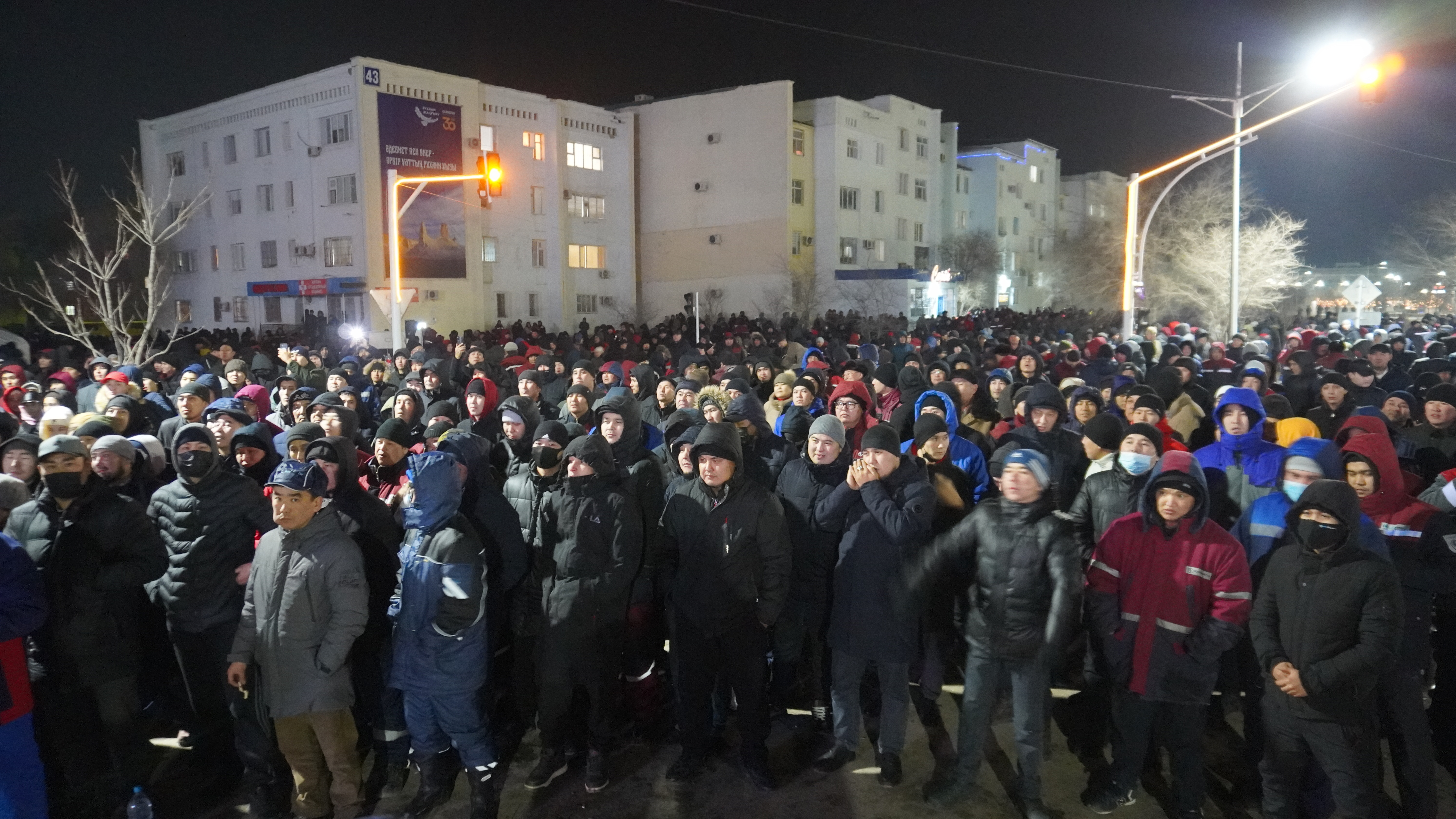
Protesters gathered first in Zhanaozen in early January 2022. Photo credit: Kultegin Aspanuly.
Assan filmed protesters dismantling yurts in Zhanaozen then flew to Shymkent, where 20 people had been killed during the demonstrations. He interviewed those being treated at the hospital.
“People had their eyes shot out,” he said. “They had broken arms. Several were shot in two or three places.”
For months after, Assan and Saniya — and many other journalists — covered court cases related to the January events. Assan interviewed the relatives of the dead and those who said they were tortured by police.
“It was very heavy on me emotionally,” he admitted. “There was no possibility for psychological rehabilitation. I had to take a break.”
Each witness to the unrest in January has processed it differently. Assan quit his job at Orda.kz and now gives Kazakh language lessons. He says he is trying to use positive psychology to heal from the tragedy he covered. Issa, meanwhile, dreams of becoming a photojournalist after his experience coving the protests. He said, “I feel like I could help change something in my country.”
Alma, the citizen journalist, continues to diligently post dispatches on Facebook and says she is proud that the January protests started in her hometown.
Nurbek, the activist, continues to protest but is frustrated with the lack of progress. “Nothing changes,” he said. “Where are the people who can protect our rights?”
Saniya continues to carefully monitor the discontent in Zhanaozen.
“Even as a reporter making a broadcast of the events, I had to stay objective,” Saniya remembered. “But everything was screaming inside me because I was worried about the fate of my country. When people go to a protest, they are going to defend their rights. I am really upset that people were killed. It’s an attempt by the government to show that if people protest, they are going to be shot, they are going to be imprisoned, they are going to be tortured.
“I am not afraid,” she added. “But they are killing my hope.”
***
Continue reading with day 2, following the story to Aktobe and Atyrau.

































